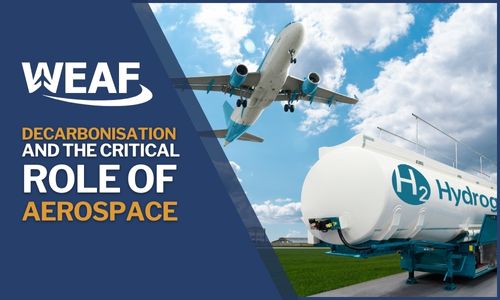Decarbonisation and the Critical Role of Aerospace – the process of reducing or eliminating carbon emissions.
 Decarbonisation, the process of reducing or eliminating carbon emissions, is crucial for addressing climate change and achieving a sustainable future.
Decarbonisation, the process of reducing or eliminating carbon emissions, is crucial for addressing climate change and achieving a sustainable future.
The aerospace industry plays a critical role in this global effort due to its significant contribution to greenhouse gas emissions. Here’s an overview of the decarbonisation challenges faced by the aerospace sector and the steps being taken to mitigate its environmental impact.
1. Emissions from Aviation: Aviation currently accounts for a significant portion of global carbon dioxide emissions. Commercial aircraft rely on fossil fuels, primarily jet fuel, which releases greenhouse gases when burned. Additionally, aircraft emit other pollutants like nitrogen oxides and particulate matter, contributing to air quality concerns.
2. Technological Advances: The aerospace industry is investing heavily in research and development to reduce its carbon footprint. Several key technologies and strategies are being pursued, including:
a. Sustainable Aviation Fuels (SAFs): Developing and implementing SAFs derived from renewable sources is a key focus. These fuels have the potential to significantly reduce aviation emissions since they can be used as a drop-in replacement for conventional jet fuel without requiring major modifications to existing aircraft or infrastructure.
b. Electrification: Electric and hybrid-electric propulsion systems are being explored for short-haul flights and urban air mobility. While the electrification of large commercial aircraft remains a significant technical challenge, progress is being made in smaller aircraft and drones.
c. Hydrogen Power: Hydrogen is seen as a promising alternative fuel for long-range commercial flights. Hydrogen-powered aircraft produce zero emissions, with water vapor being the only byproduct. However, the production, storage, and distribution of hydrogen pose significant challenges.
d. Advanced Materials and Design: Lightweight materials, such as carbon composites, are being utilized to reduce aircraft weight and improve fuel efficiency. Advanced aerodynamics and improved engine designs are also being pursued to minimize drag and increase overall efficiency.
3. Regulatory Measures: Governments and international organizations are implementing regulations and setting emission reduction targets for the aerospace industry. For example, the International Civil Aviation Organization (ICAO) has established the Carbon Offsetting and Reduction Scheme for International Aviation (CORSIA) to offset aviation emissions growth from 2020 onwards.
4. Collaboration and Partnerships: Stakeholders across the aerospace industry, including aircraft manufacturers, airlines, engine manufacturers, and research institutions, are collaborating to drive innovation and accelerate decarbonization efforts. Public-private partnerships are being formed to share knowledge, resources, and funding.
5. Sustainable Operations: Apart from technological advancements, aerospace companies are also focusing on sustainable operational practices. This includes optimizing flight routes, implementing more efficient ground operations, and adopting sustainable procurement and supply chain practices.
6. Long-term Vision: The ultimate goal of the aerospace industry is achieving net-zero carbon emissions. Many companies have committed to ambitious targets, such as achieving carbon-neutral growth by 2050. These long-term visions are driving innovation and investment in sustainable solutions.
Decarbonising the aerospace industry is a complex and multifaceted challenge that requires a combination of technological advancements, regulatory frameworks, and collaborative efforts. While progress has been made, further research, investment, and global cooperation are necessary to achieve substantial reductions in aviation-related emissions and ensure a sustainable future for air travel.
